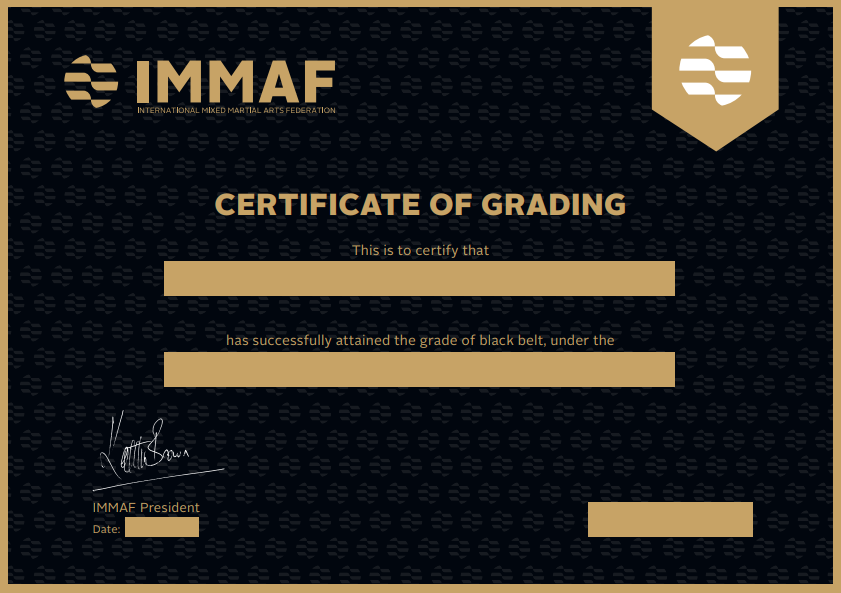By IMMAF.org lead writer/photographer, Jorden Curran On 21-23 September the IMMAF Coaches Licensing Course took place in Mexico City, welcoming 40 coaches from across the nation. The course was hosted by IMMAF Development Director Andrew Moshanov and Federacion de Artes Marciales Mixtas (FAMM), Mexico’s MMA regulator who are to award the first official black belt certificates. On September 4, IMMAF announced that a select group of elite level coaches would be awarded ‘black belt’ recognition (read the full announcement HERE). IMMAF chief executive and former Olympic judoka, Densign White recently elaborated on the symbolism, meaning and motivation for the announcement. “Any sport wanting recognition needs this progression element for participants to follow, without it recognition will be much harder to achieve under some national governments and ultimately the Global Association of International Sports Federations (GAISF) . “Certain terminology in martial arts provokes an alarm bell response. It’s important not to see this as a ‘belt’ system like that of BJJ or Judo, this isn’t recognition of having mastered all disciplines within MMA; that is a misconception. We are presenting these grades as a mark of having advanced through the IMMAF progression system.” He added, “whether the physical representation of achievement is a belt or otherwise, it is that added motivation for practitioners to strive towards and take pride in. The belt isn’t entirely necessary, it can be a grade presented simply as a certificate or wristband, for example. Some of my old Judo grade certificates are among my most prized possessions. “Beyond its fundamental aspects, the choice of how the progression scheme is adopted and presented is afforded to the national federation.” Is incentive for practitioners needed? MMA participation will vary on a global scale. Across the UK, USA and Ireland, many gyms will likely be thriving. However, they are figuratively empty without a monitored progression system to assess: how many participants are coming in, how many are leaving the sport, how many of these participants are competitors, what is their level of experience or are they simply recreational? IMMAF’s grading and retention initiative is primarily aimed at and for the benefit of those entering the sport as recreational participants, with a small percentage expected to actively compete. “MMA gyms may be thriving, but currently this means little in the big picture of recognition. Define ‘thriving’…MMA is allegedly growing, but recognising growth of a sport on a national to global scale needs to be backed up by official membership, logged evidence of participant numbers, shifts in those numbers and to what extent each is person is involved or progressing. We need tangible data and a graded progression system is a way to track this and hopefully motivate retention of participants as they continue to progress and achieve.” The IMMAF CEO clarified that small annual membership fees should be implemented, as is normal for any sports regulation, from Judo to football, for self-sufficiency and the ability to maintain operations in the long term. “When a membership or grading fee is collected, that money is divided primarily between the registered gym or club where the individual trains and the national federation. The remainder goes to the international body. This was the system we followed in Judo with a grading fee costing around £6.” With MMA having evolved in reverse, IMMAF’s mission is unique. That which goes on below the sport’s outer layer is often overlooked. IMMAF and its global membership are building a sustainable, regulated sport of many layers. Previously, global regulators such as WADA and GAISF have been unable to see past the past the polarizing elite level into what thrives below, because the sport had no way to present itself. “Recreational participation is a major factor in sustaining a self-sufficient sport,” Mr. White explained. “The earliest grass roots stage must be nurtured. Through this, the sport of Judo was able to identify that a significant percentage of participants were leaving the sport around the time that they first competed. Through a monitored progression system, this could be addressed. “Sport regulation goes far beyond the familiar issues of event safety and competing athletes. It extends deep into the earliest grass roots stages and recreational involvement. These are the wider statistics of which are required for recognition.” IMMAF president Kerrith Brown added: “Whether a national federation decides to mark grading levels of participants through colour rash guards, wrist bands, certificates alone or other means, the term ‘black belt’ holds a meaning in martial arts and a value that is widely understood to have been earned through dedication over many years. Tyron Woodley’s recent reaction to receiving his BJJ black belt is not an anomaly in MMA. Professional fighters, coaches, matchmakers, commentators and journalists frequently speak with respect of MMA competitors who have achieved black belts in the core sports, such as BJJ and judo. Why can’t MMA participants have their own?”
]]>Black belt ACQUIRED! #UFC228 pic.twitter.com/bW08El9a0x
— UFC (@ufc) September 9, 2018

